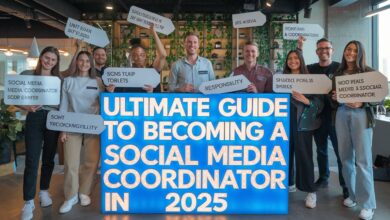That’s Not How You Do It: Why Mistakes Happen and How to Avoid Them

That’s not how you do it how many times have you heard this phrase when trying something new? Whether it’s in the kitchen, at work, or while learning a new hobby, we’ve all faced moments when things just didn’t go as planned. These words can be frustrating to hear, but they also give us a chance to step back, learn, and improve.
In this blog post, we’ll dive into why mistakes happen and how you can turn them into learning opportunities. Everyone makes mistakes, but it’s how you respond to them that makes all the difference. Let’s explore how to avoid common errors and improve your skills, so you can stop hearing “that’s not how you do it” and start hearing, “great job!”
Table of Contents
That’s Not How You Do It: The Top Mistakes People Make and How to Avoid Them
We all have heard the phrase “that’s not how you do it,” and it can be discouraging. But mistakes are a normal part of learning. Whether you are cooking, doing homework, or working on a project, you may find yourself making errors. The key is not to focus on the mistake but to learn from it.
When you’re learning something new, it’s easy to make mistakes. It could be adding the wrong ingredient in a recipe or forgetting a step in a task. But don’t worry! Making mistakes is how you grow. The important thing is to stop and think about what went wrong, so you don’t make the same mistake again.
One of the best ways to avoid mistakes is by asking questions. If you don’t understand something, ask for help. This will help you avoid problems before they happen. It also helps you feel more confident about your progress. Always remember, mistakes are just steps toward improvement.
Learning from “That’s Not How You Do It”: Why We All Make Mistakes
Mistakes happen to everyone, even the best of us. It’s part of being human! When someone says, “that’s not how you do it,” they might be pointing out an error, but it’s important not to feel bad. Everyone learns differently, and making mistakes is simply part of that process.
Why do mistakes happen? Sometimes we rush or don’t fully understand what needs to be done. At other times, we might get distracted or not follow the right steps. Recognizing why the mistake happened helps you improve the next time. Don’t be afraid to ask for feedback and use it to your advantage.
The truth is, no one gets things perfect on the first try. So, instead of feeling bad about mistakes, treat them as learning moments. Every time you make a mistake, you gain valuable knowledge on how to do things better.
How to Stop Hearing “That’s Not How You Do It” and Start Succeeding
If you want to stop hearing “that’s not how you do it,” it’s important to stay calm and be patient with yourself. The first step to success is understanding that mistakes are part of the journey. The more you practice, the better you’ll get. So don’t give up!
Here are some simple tips to help you improve:
- Be Patient: Don’t rush through tasks. Take your time to do things correctly.
- Focus on Learning: See mistakes as a chance to grow, not something to be upset about.
- Ask for Help: If you’re stuck, ask for guidance. It can save you from making the same mistake again.
- Practice Regularly: The more you practice, the fewer mistakes you’ll make. It’s all about improving over time.
From Mistakes to Success: Changing the Way You Hear “That’s Not How You Do It”
When you hear “that’s not how you do it,” instead of feeling embarrassed, think about how you can do better next time. Success doesn’t come from avoiding mistakes—it comes from learning from them. Everyone makes mistakes, but not everyone learns from them.
Ways to turn mistakes into success:
- Think About What Went Wrong: Reflect on the mistake and figure out why it happened.
- Try Again: Don’t be afraid to try again. Practice is key!
- Celebrate Progress: Each time you make a mistake and improve, celebrate that progress.
“That’s Not How You Do It” – A Simple Guide to Fixing Common Errors

We all make errors, but it’s important to know how to fix them. If you hear “that’s not how you do it,” try to stay calm and focus on fixing the mistake. Here are some steps to fix common errors:
- Identify the Mistake: Find out what went wrong.
- Fix the Problem: Correct the error and try again.
- Learn and Improve: Use what you learned to do better next time.
By following these steps, you will stop hearing “that’s not how you do it” as much, and you’ll improve over time.
The Right Way to Do It: Avoiding Common Mistakes That Lead to “That’s Not How You Do It”
No one likes hearing “that’s not how you do it.” Fortunately, there are simple ways to avoid common mistakes. By taking your time and paying attention, you can make fewer errors. Below are a few tips that can help:
- Follow Instructions Carefully: Make sure you read instructions or steps thoroughly before starting.
- Ask Questions: If you’re unsure about something, ask someone who knows more.
- Take Breaks: Sometimes, stepping away for a moment helps you come back with a clearer mind.
By focusing on these simple practices, you can avoid mistakes and do things the right way.
Why “That’s Not How You Do It” Isn’t a Failure: Understanding the Importance of Mistakes
Mistakes are a natural part of learning, and hearing “that’s not how you do it” doesn’t mean you’ve failed. It just means you have an opportunity to learn and grow. It’s important to change how you think about mistakes they are not failures but stepping stones to success.
Embrace mistakes as part of your journey to success. When you make a mistake, take it as a challenge to improve. The more you learn from your mistakes, the better you’ll get at what you’re doing. So, the next time you hear “that’s not how you do it,” take a deep breath and keep going.
“That’s Not How You Do It” – How Feedback Can Help You Improve Faster
When you hear “that’s not how you do it,” take a moment to listen and reflect on the feedback. Feedback is one of the best ways to improve and learn. Instead of seeing it as criticism, view it as a chance to get better.
Here’s how feedback can help you improve:
- Understand What Went Wrong: Feedback shows you exactly where you can improve.
- Build Confidence: When you fix a mistake, you feel more confident about your abilities.
- Avoid Making the Same Mistake: Feedback helps you avoid repeating errors.
By using feedback, you can stop hearing “that’s not how you do it” and start getting better at whatever you do.
Turning Criticism into Growth: How to Use “That’s Not How You Do It” to Your Advantage
Criticism can be tough to hear, but it’s an important part of getting better. When you hear “that’s not how you do it,” try to use the feedback to grow. Criticism helps you see areas where you need improvement.
How to turn criticism into growth:
- Stay Positive: View criticism as a chance to learn, not a personal attack.
- Learn from the Mistake: Figure out what went wrong and how you can do it better.
- Make Adjustments: Apply the feedback and try again. You’ll improve over time.
By turning criticism into positive action, you can make fewer mistakes and become more successful.
Mastering Your Skills: How to Make Fewer Mistakes and Hear “That’s Not How You Do It” Less Often
The more you practice, the fewer mistakes you’ll make. But remember, it’s okay to hear “that’s not how you do it” from time to time. It just means you’re learning! The key is to keep practicing and improving your skills.
Tips for mastering your skills:
- Practice Regularly: The more you practice, the better you get.
- Reflect on Your Mistakes: Think about what you can do differently next time.
- Stay Determined: Don’t give up just because things didn’t go perfectly.
With time, you’ll hear “that’s not how you do it” less often and more success will follow!
“That’s Not How You Do It”: Turning Mistakes Into Learning Opportunities

When you hear the phrase “that’s not how you do it,” it’s easy to feel discouraged. However, this phrase can be a great reminder that mistakes are part of the learning process. Everyone makes mistakes, whether they are learning to ride a bike, cook a new recipe, or complete a challenging task at work. The key is not to let the mistake stop you but to learn from it.
Making mistakes teaches us valuable lessons about what works and what doesn’t. Instead of getting upset when things don’t go as planned, take a moment to reflect on what went wrong. Ask yourself: What could I have done differently? How can I improve next time? By taking these steps, you’ll avoid making the same mistake over and over.
One way to turn mistakes into learning opportunities is by writing them down. Keep a journal where you note what went wrong and what you learned from it. This helps you see your progress and shows you how much you’ve improved. Over time, you’ll find that you make fewer mistakes, and when you do, you’ll know exactly how to fix them.
Mistakes aren’t failures—they’re stepping stones on the path to success. So, the next time someone says, “that’s not how you do it,” take it as a chance to grow and keep trying. Each time you learn from a mistake, you’re getting one step closer to mastery.
How to Stay Positive When You Hear That’s Not How You Do It
Hearing “that’s not how you do it” can be discouraging, but it doesn’t have to bring you down. Instead of seeing it as a setback, think of it as an opportunity to improve and become better at what you’re doing. Staying positive in the face of criticism is an important skill that can help you grow both personally and professionally.
First, it’s important to remember that everyone makes mistakes. Even the most successful people have faced criticism and failure at some point in their lives. What sets them apart is their ability to stay positive and keep going. When someone points out that you’ve made a mistake, take a deep breath and remind yourself that it’s okay. Nobody is perfect, and every mistake is a chance to learn.
Another way to stay positive is by focusing on the progress you’ve made. Think about how much you’ve learned and how far you’ve come. Even if you haven’t mastered something yet, you’re improving with each attempt. Instead of focusing on what went wrong, look at what you did right and build on that.
It’s also helpful to seek support from others. Talking to someone who believes in you can lift your spirits and help you see things from a different perspective. Remember, when you hear “that’s not how you do it,” it’s not the end—it’s just the beginning of a new opportunity to do better.
Why That’s Not How You Do It Shouldn’t Hold You Back
Hearing “that’s not how you do it” can feel like a setback, but it shouldn’t hold you back. In fact, this type of feedback is a gift. It shows you where you can improve and gives you a chance to refine your skills. Whether you’re learning a new task or perfecting an old one, constructive criticism is essential for growth.
The fear of making mistakes can sometimes prevent us from trying new things. But mistakes are a part of the process, not a reason to quit. When you make an error, take a moment to reflect and ask yourself what you can do differently next time. Then, make a plan to improve. This approach not only helps you avoid repeating the same mistakes but also builds resilience and confidence.
One of the best ways to move forward when you hear “that’s not how you do it” is by breaking down the task into smaller, manageable steps. Focus on one step at a time and give yourself credit for each small victory along the way. This will help you stay motivated and reduce the feeling of being overwhelmed.
If you view mistakes as an opportunity to learn and grow, they won’t hold you back. Instead, they will push you toward success. So, the next time you hear “that’s not how you do it,” remember: it’s just a sign that you’re on the right path to improvement.
The Power of Patience: Why That’s Not How You Do It is Part of the Process
Patience is key when it comes to learning new skills. When you’re just starting out, hearing “that’s not how you do it” is part of the process. It’s natural to make mistakes, but patience allows you to keep going without getting discouraged. If you can be patient with yourself, you’ll give yourself the chance to improve and grow.
Learning anything new takes time. Whether you’re learning how to draw, cook, or solve a complicated math problem, you will face challenges along the way. Instead of rushing through the process, take your time and enjoy the journey. Remember, perfection doesn’t happen overnight.
One way to develop patience is to set realistic goals for yourself. Instead of aiming for perfection, focus on making progress each day. Celebrate small victories and take note of how much you’ve learned. When you realize that improvement comes with time and practice, you’ll be less likely to give up after hearing “that’s not how you do it.”
Being patient with yourself also means being kind to yourself. Don’t be too hard on yourself when things go wrong. Treat yourself with the same kindness that you would offer a friend who is struggling. When you embrace patience, you’ll be amazed at how much you can accomplish over time.
Embracing Mistakes: How That’s Not How You Do It Leads to Better Results
Embracing mistakes is one of the best ways to grow and improve. When you hear “that’s not how you do it,” it can feel discouraging, but this feedback is crucial to your development. Instead of seeing mistakes as failures, view them as opportunities to learn and do better next time.
One of the first steps in embracing mistakes is changing your mindset. Instead of feeling defeated by errors, ask yourself what you can learn from the situation. Every mistake brings new knowledge that can help you improve. By seeing mistakes as a positive part of the learning process, you’ll feel more confident and motivated to keep going.
Another way to embrace mistakes is by experimenting. When you try new things, you might not always get it right the first time. And that’s okay! Mistakes are part of the creative process, and they often lead to better results. So, instead of being afraid to make mistakes, embrace them as part of the journey.
As you continue to practice and learn, you’ll find that you make fewer mistakes. The key is to keep moving forward and not to let any setbacks discourage you. So, when someone says, “that’s not how you do it,” remember it’s just a sign that you’re on the right path.
How to Embrace Feedback and Stop Hearing That’s Not How You Do It

Feedback is essential for growth, but it’s not always easy to hear, especially when it comes with the phrase “that’s not how you do it.” Instead of taking it personally, embrace the feedback and use it to improve. Feedback is a tool for growth it helps you identify areas where you can improve and become more skilled at whatever you’re doing.
When someone tells you, “that’s not how you do it,” try not to get defensive. Instead, take a step back and listen to what they’re saying. Understand that they are trying to help you. Ask questions if you don’t understand, and make sure you’re clear on what needs to be done differently. This shows you’re open to learning and improving.
Sometimes, the hardest part is accepting that you’ve made a mistake, but doing so helps you move forward. Once you’ve accepted the feedback, create a plan to improve. Break down the task into smaller steps and focus on mastering one step at a time. With consistent practice and effort, you’ll hear “that’s not how you do it” less often.
Remember, feedback doesn’t mean you’re a failure. In fact, it’s the opposite! It’s an opportunity to get better. So, the next time you hear “that’s not how you do it,” take a deep breath, thank the person for their input, and use the feedback as a stepping stone to improvement.
Overcoming the Fear of Making Mistakes: Why That’s Not How You Do It Isn’t a Setback
Many people are afraid of making mistakes because they think it means they’ve failed. However, hearing “that’s not how you do it” should not be seen as a setback, but as part of the journey toward success. Mistakes are a natural part of learning, and the fear of making them often holds us back from trying new things.
The key to overcoming this fear is to understand that no one gets everything right the first time. Even the most successful people have failed at something before reaching success. Mistakes are simply opportunities to learn. When you make a mistake, it shows that you’re challenging yourself and growing, which is a good thing!
To overcome the fear of mistakes, start by changing how you think about them. Instead of fearing them, see them as stepping stones to success. When you hear “that’s not how you do it,” take it as feedback that helps you move closer to your goal. Don’t let the fear of making mistakes stop you from trying new things. The more you try, the better you’ll get.
Finally, remember that mistakes are a normal part of learning. So, the next time you hear “that’s not how you do it,” smile and think of it as a chance to improve. You are not failing you are growing.
Conclusion
In the end, hearing “that’s not how you do it” is not something to be afraid of. It’s just a part of learning and growing. Every mistake you make is a step closer to getting better at what you’re doing. So, don’t get discouraged just keep trying, and always remember that mistakes are how you learn and improve.
Stay patient with yourself and focus on practicing. With each try, you’ll improve and hear “that’s not how you do it” less and less. Embrace feedback, keep a positive attitude, and most importantly, never stop learning. Every time you get it wrong, you’re actually getting closer to doing it right!
FAQs
Q: Why do I keep hearing “that’s not how you do it”?
A: Hearing “that’s not how you do it” is normal when you’re learning something new. It simply means you’re still figuring things out, and with practice, you’ll get better at it.
Q: How can I stop making mistakes?
A: You can’t stop mistakes entirely, but the more you practice and learn from them, the fewer mistakes you’ll make in the future. Keep trying!
Q: What should I do when I hear “that’s not how you do it”?
A: Stay calm and listen carefully. Think about what went wrong and use it as a chance to improve. Everyone makes mistakes, even the best!
Q: Does making mistakes mean I’m not good at something?
A: No, making mistakes just means you’re learning! Mistakes help you get better, so don’t be discouraged. It’s all part of the process.
Q: How can I stay positive after making a mistake?
A: Focus on what you’ve learned and celebrate the progress you’ve made. Remember, each mistake helps you grow, and with practice, you’ll improve!




